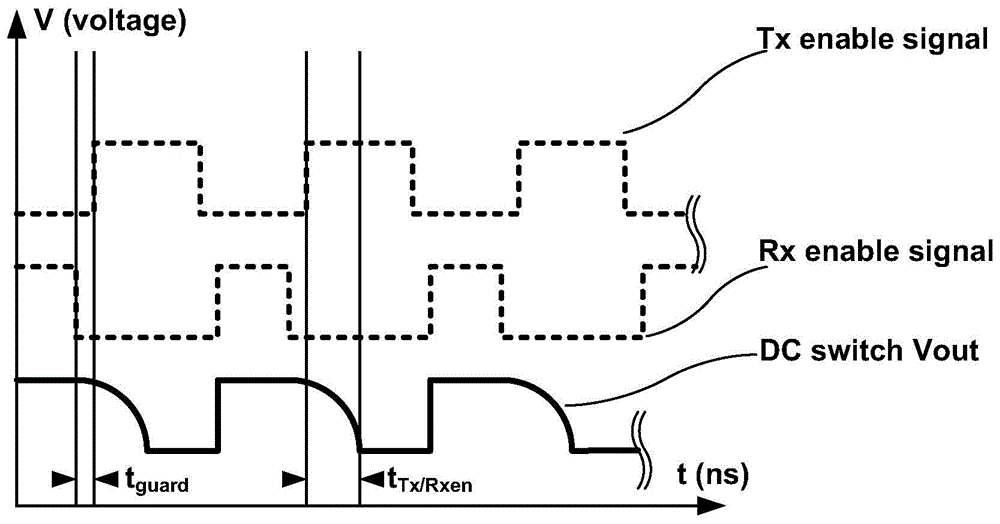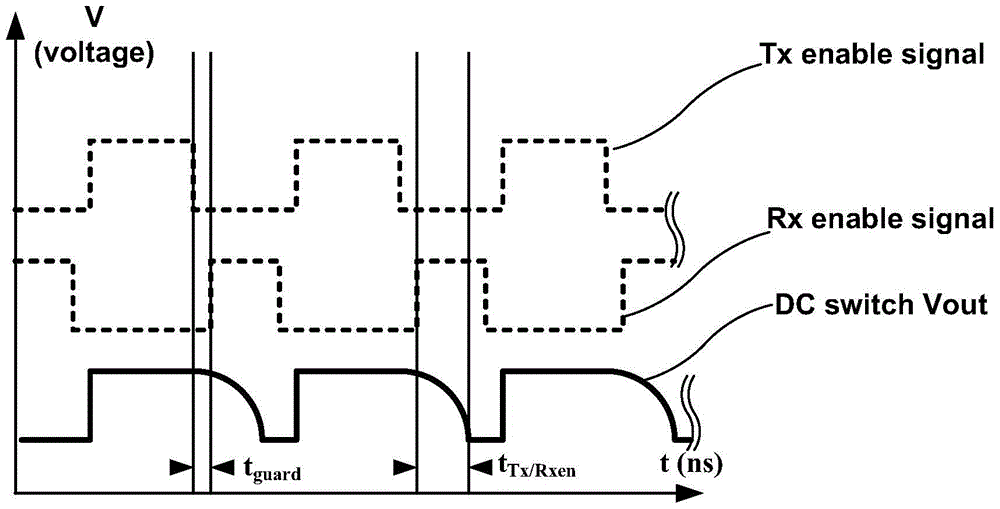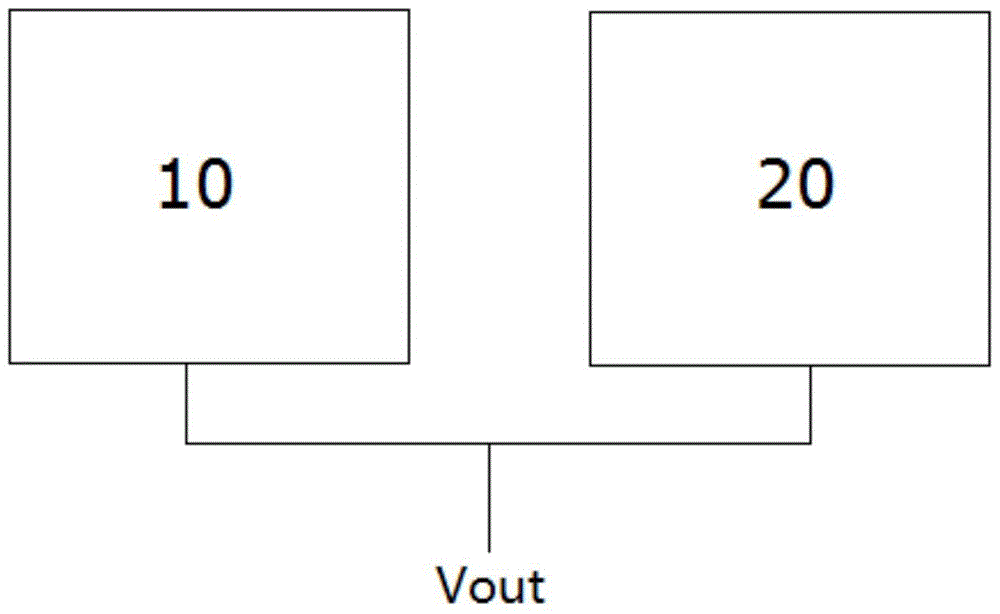A reinforced isolation circuit
An isolation and circuit technology, applied in the field of wireless communication, to suppress loop distortion, improve isolation, and shorten turn-off delay time
- Summary
- Abstract
- Description
- Claims
- Application Information
AI Technical Summary
Problems solved by technology
Method used
Image
Examples
Embodiment 1
[0036] Such as image 3 As shown, the power supply circuit 10 of the enhanced isolation circuit is a p-MOS, its source is connected to the power supply VDD, the discharge circuit 20 is an n-MOS, its source is grounded, and the drain of the p-MOS is the voltage output of the discharge circuit 10 Terminal V out , which is connected to the drain of the n-MOS.
[0037] The inverter circuit 30 is an inverter 31 , and the Tx / Rx control signal Tx / Rx Enable Signal is respectively connected to the gates of the p-MOS and n-MOS through the inverter 31 .
[0038]The inverter 31 inverts the Tx / Rx control signal Tx / Rx Enable Signal, that is, inverts the high potential into a low potential to control whether the p-MOS and n-MOS are enabled or not. When the Tx / Rx control signal Tx / Rx Enable Signal is at a high potential, the potential is reversed to a low potential through the inverter 31. At this time, the p-MOS channel is turned on, and the output voltage terminal V of the power supply ci...
Embodiment 2
[0043] Such as Figure 4 As shown, the power supply circuit 10 of the enhanced isolation circuit is a pnp-BJT, its emitter is connected to the power supply VDD, the discharge circuit 20 is an npn-BJT, its emitter is grounded, and the collector of the pnp-BJT is the voltage of the discharge circuit 10 Output V out , which is connected to the collector of the npn-BJT.
[0044] The inverter circuit 30 is an inverter 31 , and the Tx / Rx control signal Tx / Rx Enable Signal is respectively connected to the bases of the pnp-BJT and the npn-BJT through the inverter 31 .
[0045] In Embodiment 2, the p-MOS and n-MOS in Embodiment 1 are replaced by pnp-BJT and npn-BJT respectively, which can also achieve the effect of shortening the discharge time. Since the start-up of p-MOS and n-MOS must first charge the gate oxide layer to reverse the polarity of the channel, there will be a voltage delay time t D , no voltage delay time t if npn-BJT is used D , ie t D =0. Of course, in order to...
Embodiment 3
[0047] Such as Figure 5 As shown, the power supply circuit 10 of the enhanced isolation circuit is a low dropout regulator (Low Drop-Outregulator, LDO), the discharge circuit 20 is an n-MOS, its source is grounded, and its drain is connected to the voltage output of the power supply circuit 10 Terminal V out connected. The Tx / Rx control signal Tx / Rx Enable Signal is connected to the low dropout voltage regulator LDO to control whether the low dropout voltage regulator LDO supplies power. At the same time, the Tx / Rx control signal Tx / Rx Enable Signal passes through an inverter 31 and n - the gates of the MOS are connected to control whether the discharge circuit 20 discharges.
[0048] When the Tx / Rx control signal Tx / Rx Enable Signal is at a high voltage level, the low dropout voltage regulator LDO can supply power; when the Tx / Rx control signal Tx / Rx Enable Signal is at a low voltage level, the low dropout voltage regulator The device LDO is powered off, and at this time ...
PUM
 Login to View More
Login to View More Abstract
Description
Claims
Application Information
 Login to View More
Login to View More - Generate Ideas
- Intellectual Property
- Life Sciences
- Materials
- Tech Scout
- Unparalleled Data Quality
- Higher Quality Content
- 60% Fewer Hallucinations
Browse by: Latest US Patents, China's latest patents, Technical Efficacy Thesaurus, Application Domain, Technology Topic, Popular Technical Reports.
© 2025 PatSnap. All rights reserved.Legal|Privacy policy|Modern Slavery Act Transparency Statement|Sitemap|About US| Contact US: help@patsnap.com



